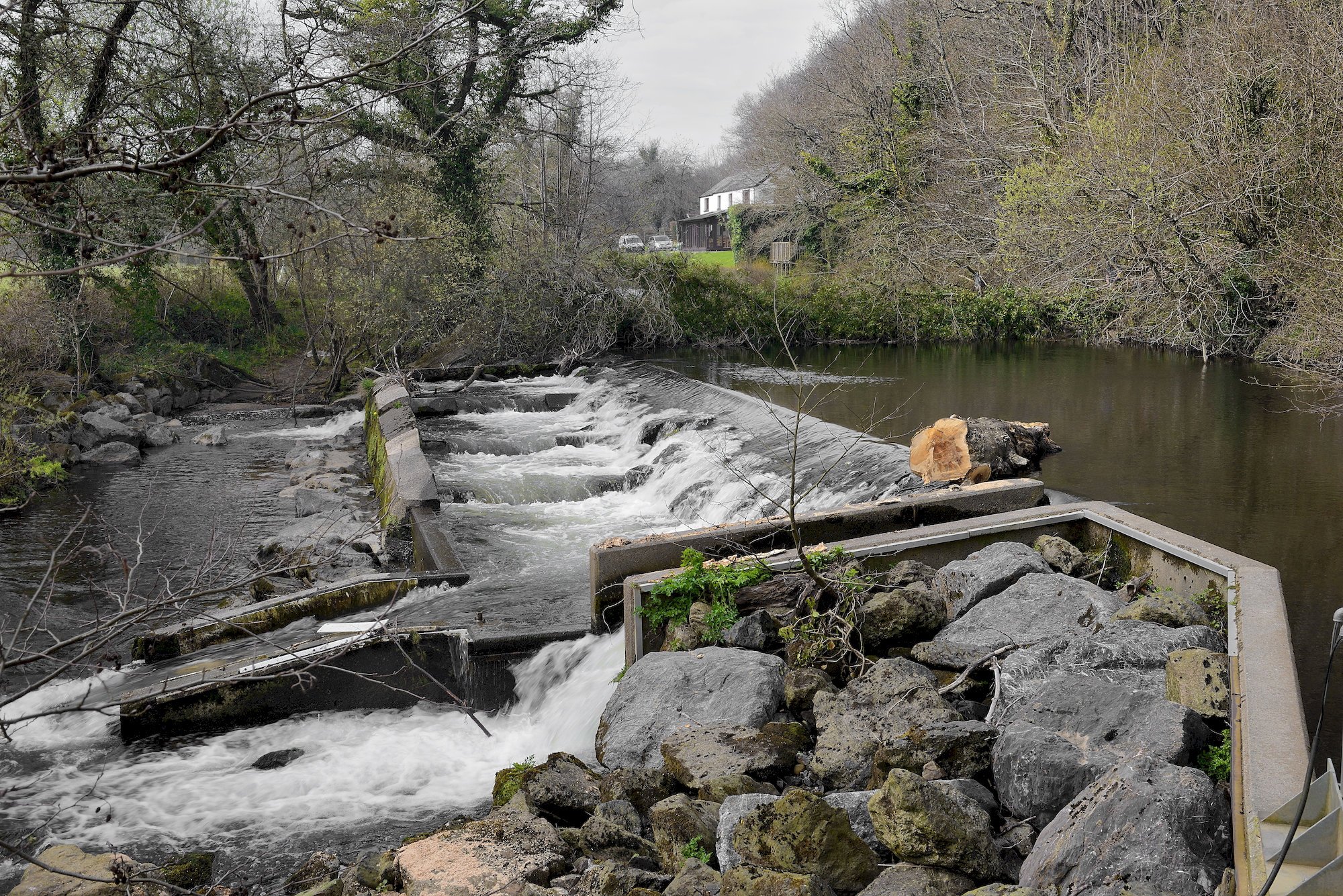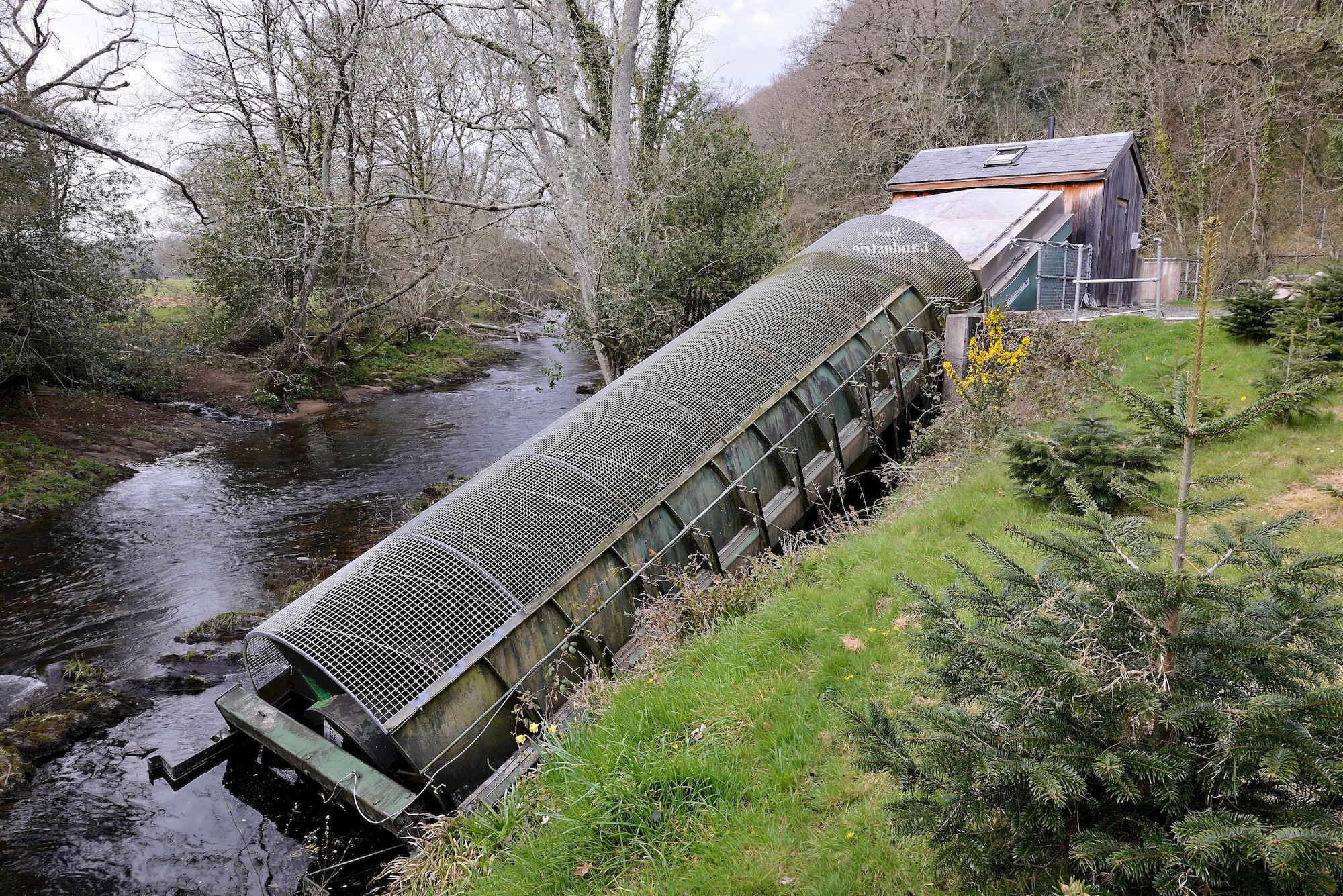Salmonids with a Side of Science
How a Fish Counter helps us track migratory fish on the River Teign
If you’ve ever stood by the River Teign and wondered how on earth we keep tabs on migratory species (salmon and sea trout) that seem to have mastered the art of stealthy swimming, the answer might surprise you. No, it’s not a team of keen snorkel-wearing volunteers lurking under bridges. It’s something far more subtle (and a bit scientific): the resistivity fish counter located at Sowton.
The Fish counter at Sowton Weir. Fish are counted before they ascend up through the fish ladder
Nestled quietly within a notch at Sowton weir, this clever bit of kit is doing an important job - counting the number of migratory fish like salmon and sea trout as they make their epic upstream journeys. Think of it as the river’s version of a nightclub clicker counter, but with more water and fewer questionable fashion choices!
So… How Does a Resistivity Fish Counter Work?
Resistivity fish counters are brilliant in their simplicity. They use a series of metal electrodes which pass a tiny electric current through the water (don’t worry, no fish are getting zapped in the name of science). The counter works by taking advantage of the difference in electrical resistance between water (being more resistant) and fish (being less resistant). It’s kind of like waving a spoon through a cup of tea, if your tea was wired for data collection.
These changes in resistance are recorded and analysed, allowing researchers to detect the size, direction, and number of fish passing through.
Some counters are even hooked up to video cameras to allow scientists to confirm it was a fish and not, say, an adventurous otter or a particularly bold stick. Have a look at this video of the River Frome’s counter (in Dorset) which uses video to verify both the size and type of fish heading both up and downstream.
Why Sowton? Why Now?
The fish counter at Sowton is located approximately 21 kilometres upstream of the tidal limit, so it does not give a total count of all fish entering the river catchment, however, it is located along a key stretch where migratory fish like sea trout (Salmo trutta) make their move to their freshwater spawning grounds located within the upper catchment.
Sea trout are a bit like salmon’s moody cousins. Although they begin their lives in the river as a wild brown trout. They start life small, speckled, and a keen will to survive. Life in the river is all about dodging kingfishers, annoying otters, and avoiding predation at all costs… no wonder they’re so hard to fool with a fly rod!
But some of these trout? They're not content with small waters and smaller dreams. No, some are born extra. Around their second or third year, a few decide: ‘I want more from life. I want salt. I want adventure. I want prawns!’
And so, they head downstream, grow silvery like they’ve joined a glam rock band, and become sea trout. They pop out into the sea, bulk up on seafood, dodge seals and fishing nets, and eventually return to the Teign like prodigal fish. Bigger, flashier, and probably with a story about “that one time near Plymouth.”
But they never forget where they came from. They're still Teign trout at heart, just with a bit more sparkle and normally about twice the size!
The Sowton counter helps lift the veil on their movements, giving us valuable clues about when they’re on the move. But this is only the beginning, as we are continuing to work with Bournemouth University in developing a deeper understanding of their unique movements up and down the catchment using some more sophisticated technology - I’m sure there’ll be more on this another time.
Right now, though, there’s particular interest in monitoring sea trout activity. These fish provide very useful indicators as they are sensitive to water conditions, temperature changes, and environmental stress. If they’re not showing up when expected, it can be a warning bell for something going wrong in the river. If they are showing up in good numbers, well, that’s cause for cautious celebration (and possibly a few high-fives from local sea trout anglers!)
Image courtesy of volunteer Charlie Michell - Sea Trout at Drogo weir during recent spate
Why It All Matters
Beyond satisfying our inner data geeks, the information collected at Sowton is vital. It tells us when the fish are migrating, how many are coming through, and how the population is doing over time. That’s incredibly useful for river managers, fisheries scientists, conservationists, and even those just hoping to spot a silver flash in the shallows.
Sowton Weir with the take off (right) to the Archimedes hydro electric screw. A source of renewable energy
Hydro electric screw at Sowton Weir - generating electricity from the river during times of high flow and spate.
It also helps inform when to put protective measures in place, or investigating if poor water quality is affecting the fish. Think of it as nature’s own early warning system, with less shouting and more swimming.
And let’s not forget the long-term picture. The Sowton counter is building up a data record that spans years. Are fish tending to run earlier because of climate change? Are numbers dwindling due to pollution or habitat loss? With enough data, we can start to identify patterns and act before things go south. This is at the heart of our mission at TACA., Let’s always favour pro-activity over reactivity.
Wrapping Up
So the next time you wander along the River Teign and wonder what’s going on beneath the surface, remember this: thanks to the fish counter at Sowton, we’re getting a clearer picture than ever before. It’s science in action, quietly logging the comings and goings of some of our most fascinating native wildlife.
And while it may not have flashing lights or announce each fish like a game show host, “And swimming upstream next, born in Chagford and weighing in at an impressive 7lbs… it’s a sea trout from the estuary!”, it’s a very important resource we have for keeping our rivers - and the life within them - healthy and thriving.





